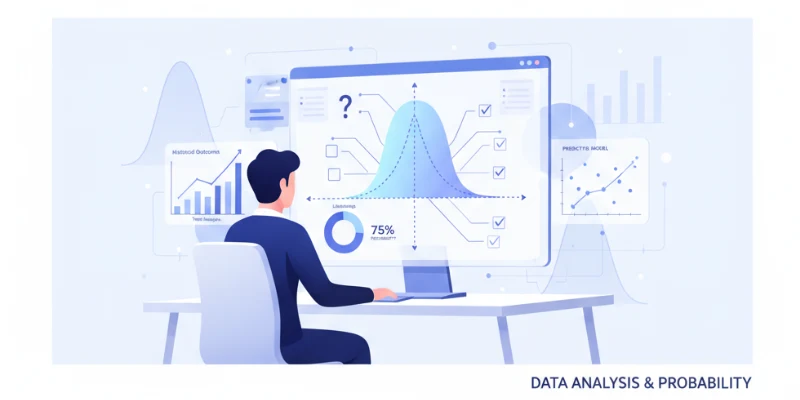
Probability plays a vital role in data analysis. It helps analysts deal with uncertainty and make informed decisions based on data. Whether you are estimating trends, identifying patterns, or making predictions, probability gives you the tools to evaluate the likelihood of outcomes. This concept is a foundation for many analytical methods used in business, science, and technology today. If you’re looking to build a strong foundation in these concepts, enrolling in a Data Analyst Course in Trivandrum at FITA Academy can be a great way to gain practical knowledge and hands-on experience.
What is Probability in Data Analysis?
The likelihood of an event occurring is quantified by probability. In data analysis, it is used to understand patterns in data, assess risks, and predict future results. When working with data, you often face situations where the outcome is not guaranteed. Probability helps you estimate how likely a certain result is based on the data available.
For example, if you analyze customer behavior and find that 70% of users prefer a particular product, probability allows you to make informed guesses about future customer choices. This insight can guide marketing strategies or inventory decisions.
Why Probability Matters in Decision Making
One of the main reasons probability is important in data analysis is that it supports better decision-making. When dealing with incomplete or uncertain data, probability allows you to assess potential outcomes with a degree of confidence. This is especially beneficial in areas such as finance, healthcare, and operations, where choices can lead to major repercussions.
Let’s say you want to predict whether sales will increase next quarter. You can use historical data and probability models to estimate the chances of a sales boost. This allows stakeholders to prepare for both best-case and worst-case scenarios. Learning how to apply these models effectively is a key part of what you’ll explore in a Data Analytics Course in Kochi, where real-world case studies help you understand how probability drives business forecasting.
Connecting Probability with Statistical Analysis
Probability is also the core of many statistical methods. Methods like hypothesis testing, confidence intervals, and regression analysis are grounded in the principles of probability. These tools help analysts draw conclusions from data, even when working with samples instead of entire populations.
For instance, if you want to compare the performance of two different marketing campaigns, tests based on probabilities can assist in identifying whether the outcomes are meaningful or simply the result of random chance. Without these tools, it would be difficult to validate findings in a reliable way.
Role of Probability in Predictive Analytics
Predictive analytics employs past data to anticipate future results. This type of analysis heavily relies on probability. Models like logistic regression, decision trees, and classification methods predict the likelihood of certain outcomes based on historical data. These concepts are thoroughly covered in a Data Analyst Course in Pune, where learners gain practical experience in building and interpreting predictive models for real-world applications.
For example, in customer churn analysis, predictive models calculate the probability that a customer will leave a service. Businesses can then take steps to reduce churn by targeting customers who are at high risk. In this way, probability not only helps in understanding what happened but also in planning what might happen next.
Dealing with Uncertainty and Risk
Every data analyst encounters uncertainty. Probability provides a structured way to manage that uncertainty. Instead of assuming results will be perfect, analysts use probability to quantify how confident they are in the outcomes.
Risk assessment is another area where probability proves valuable. In industries such as banking or insurance, it is essential to assess the probability of a risk happening and the possible consequences it may entail. Data-driven risk models use probability to offer these insights, making them essential for strategy and planning.
Probability extends beyond being merely a mathematical idea. In data analysis, it serves as a powerful tool for making sense of complex information, managing uncertainty, and guiding decision-making. From supporting statistical methods to driving predictive models, probability touches every part of the data analytics process. Joining a Data Analytics Course in Hyderabad can help you build a solid understanding of these concepts and apply them effectively to improve the accuracy and impact of your data insights.
Whether you are a beginner or an experienced analyst, strengthening your grasp of probability will help you become more confident in your analysis and more reliable in your conclusions.
Also check: An Introduction to Data Mining and Its Role in Analytics
